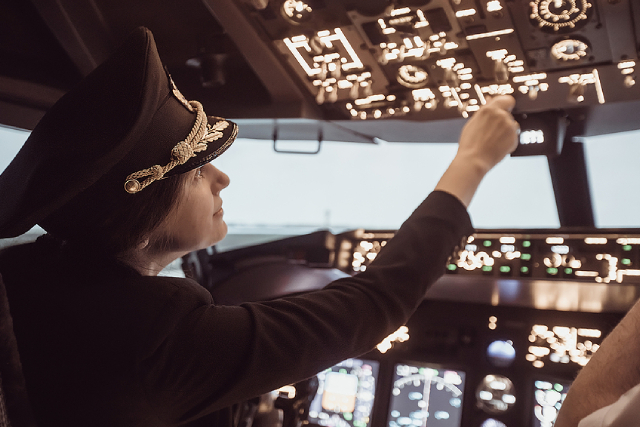
When you think about pilots or emergency rescue missions, the first image that often comes to mind is a male figure in a flight suit, confidently steering an aircraft or rushing to a critical medical situation. For years, the field of air rescue has been dominated by men, with pilots, paramedics, and emergency responders traditionally being male. But times are changing, and women are proving that they, too, can excel in this high-stakes, physically and mentally demanding profession.
Women in air rescue are not just breaking barriers – they are setting new standards of excellence. From piloting air ambulances to delivering life-saving care mid-flight, women have taken on essential roles in medical evacuation services. Their contributions deserve recognition, and International Women’s Day is the perfect time to celebrate their resilience, expertise, and dedication to saving lives.
Women pilots leading the way
One of the most visible roles in air rescue is that of the pilot. Air ambulance pilots require exceptional skill, quick decision-making, and the ability to navigate challenging conditions to ensure safe patient transport. Women have been stepping up in this field, proving that they have what it takes to fly critical care missions. Their ability to remain calm under pressure and make split-second decisions makes them invaluable in emergency medical evacuations.
In Singapore, air ambulance services play a crucial role in transporting patients across borders, especially in Southeast Asia, where access to advanced medical care can sometimes be limited. Female pilots operating air ambulances in Singapore are part of an elite group ensuring that critical patients receive timely medical attention. Their presence in the cockpit is a testament to the increasing inclusivity in the aviation and medical evacuation industries.
Emergency medical care in the skies
While pilots ensure a safe journey, medical personnel onboard air ambulances provide the urgent care needed to stabilise patients in transit. Female doctors, nurses, and paramedics are at the forefront of these missions, bringing expertise in emergency medicine and critical care. Their responsibilities go beyond administering treatment – they must also offer reassurance and comfort to patients and their families during some of the most stressful moments of their lives.
Singapore medical assistance services rely on highly trained professionals to manage medical evacuations efficiently. Women in these roles have demonstrated exceptional competence, whether handling trauma cases, providing neonatal care during air transfers, or managing complex medical conditions at high altitudes. Their compassion and ability to think on their feet make them invaluable in air rescue operations.
Breaking stereotypes in a demanding industry
The aviation and emergency medical fields have long been male-dominated, but more women are choosing careers in these challenging industries. Organisations that provide air ambulance in Singapore and beyond are recognising the importance of diversity in their teams, encouraging women to take up leadership positions, and supporting them through training and career development opportunities.
Women in air rescue face unique challenges, from societal expectations to the physical demands of the job. However, their dedication and resilience prove that gender is no barrier to excellence. Whether it is operating sophisticated medical equipment in flight, handling emergency landings, or coordinating international medical evacuations, women continue to redefine what is possible in this field.
The importance of representation
Representation matters, especially in high-stakes professions like air rescue. Seeing female pilots, doctors, and paramedics in action inspires young girls to consider careers in aviation and emergency medicine. Mentorship and visibility are crucial in encouraging the next generation of women to pursue their dreams in industries where they have historically been underrepresented.
Initiatives that promote gender diversity in air rescue services are helping bridge the gap. Scholarships, training programmes, and mentorship opportunities are enabling more women to enter the field and thrive. The presence of female professionals in air rescue not only strengthens the industry but also fosters a more inclusive and dynamic work environment.
The future of women in air rescue
As we celebrate International Women’s Day, it is essential to acknowledge the contributions of women in air rescue and support their continued growth in the industry. With advancements in technology and an increasing focus on inclusivity, the future looks promising for women in this field.
More organisations are actively encouraging women to take up roles in medical evacuation and air ambulance services. Through policies that promote work-life balance, equal opportunities, and fair recognition, the industry is gradually becoming more accessible and welcoming to women who aspire to make a difference.
Women in air rescue are not just part of the team; they are leaders, innovators, and role models. Their commitment to saving lives and breaking down barriers is paving the way for a more diverse and inclusive future in aviation and emergency medical services.
Conclusion
The world of air rescue is changing, and women are at the heart of this transformation. From piloting air ambulances to providing critical medical care in flight, their contributions are invaluable. As we honour them this International Women’s Day, it is essential to continue supporting their journey in this demanding yet rewarding profession.
EMA Global offers medical evacuation, repatriation, and air ambulance services, ensuring that patients receive the best possible care in times of crisis. Our commitment to excellence in air rescue makes us a trusted partner in emergency medical assistance.

